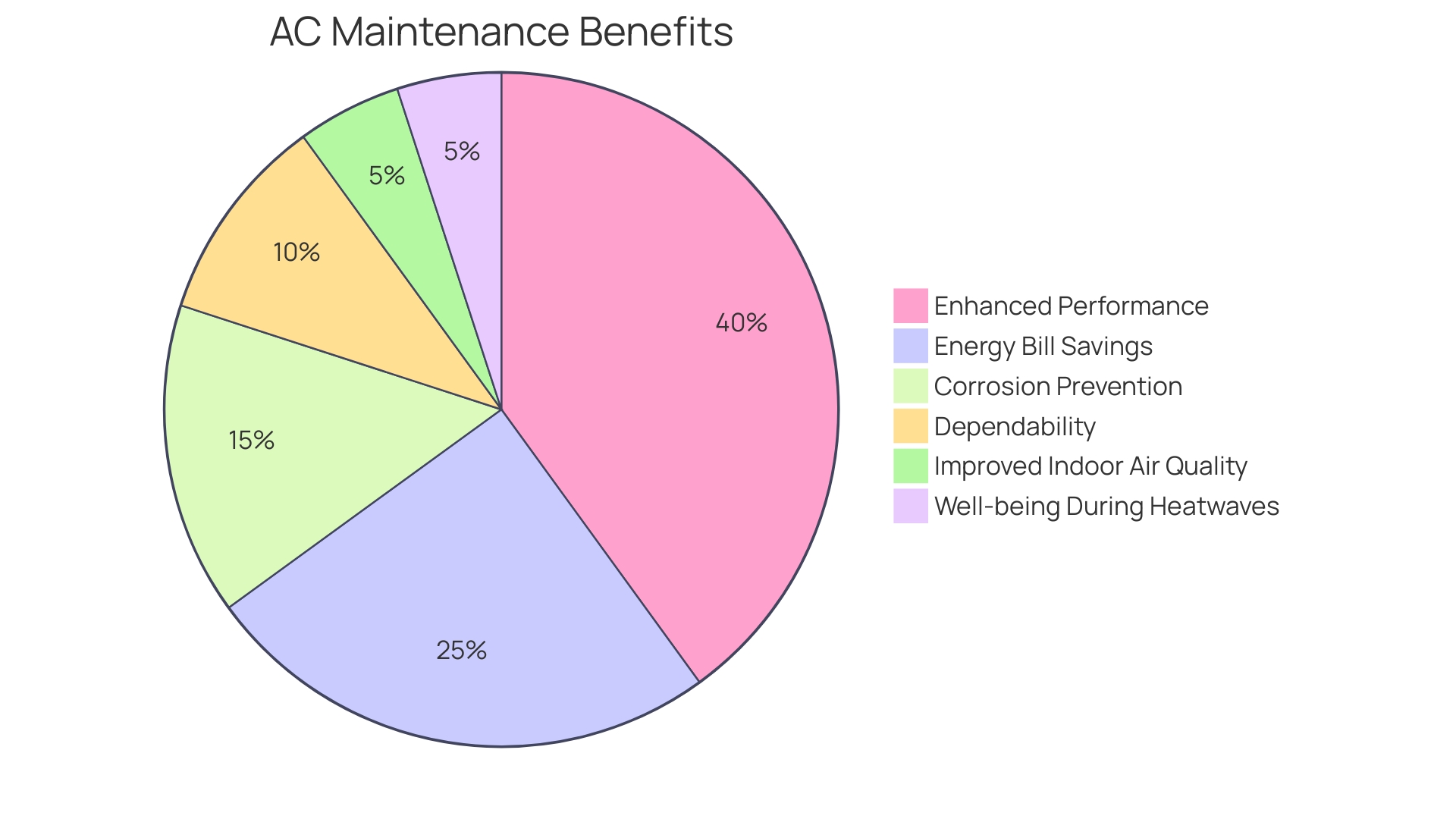Introduction
The process of evacuating an AC system is not just a routine maintenance step; it's a critical action that significantly impacts the unit's performance and durability. Without proper evacuation, air and moisture can linger within the system, causing a myriad of issues that detriment the AC's cooling capabilities. The presence of air leads to non-condensable gases that diminish the efficiency of the cooling cycle, while moisture can react with refrigerant to form corrosive acids, harming the compressor and other components.
Moreover, the trapped moisture can freeze, obstructing the capillary tube or expansion valve, leading to further inefficiencies or a complete system breakdown. To avoid these problems, the evacuation process, which involves using a vacuum pump to remove air and moisture, is indispensable. It not only maximizes the AC's efficiency but also reduces energy consumption—a critical consideration in a time when energy efficiency standards are increasingly stringent and crucial for sustainability.
Furthermore, a well-maintained system contributes to better indoor air quality, which is essential for occupant health and comfort. The benefits of proper AC evacuation are clear: enhanced performance, prolonged lifespan of the unit, and energy savings. In light of the growing focus on sustainability and the well-being of building occupants, ensuring that your AC system is properly evacuated is more important than ever.
Why Evacuate an AC System?
The procedure of removing an AC is not merely a regular maintenance measure; it is a crucial action that greatly affects the unit's performance and longevity. Without appropriate removal, air and moisture can persist within the mechanism, resulting in a multitude of problems that impair the AC's cooling abilities. The presence of air leads to non-condensable gases that diminish the efficiency of the cooling cycle, while moisture can react with refrigerant to form corrosive acids, harming the compressor and other components.
Furthermore, the trapped moisture can freeze, obstructing the capillary tube or expansion valve, resulting in additional inefficiencies or a total breakdown of the mechanism. To prevent these issues, the process of removing air and moisture using a vacuum pump is essential. It not only maximizes the AC's efficiency but also reduces energy consumption—a critical consideration in a time when energy efficiency standards are increasingly stringent and crucial for sustainability.
Moreover, a properly maintained setup contributes to improved indoor air quality, which is crucial for the health and comfort of occupants. The advantages of proper AC removal are evident: improved performance, extended lifespan of the unit, and energy savings. Considering the increasing emphasis on sustainability and the welfare of building occupants, it is crucial to ensure that your AC unit is adequately evacuated.
Tools Required for AC Evacuation
When preparing for an AC unit purging, it's crucial to have the right tools in your arsenal to ensure the process is conducted efficiently and effectively. A complete AC manifold gauge set is essential for monitoring the pressure and vacuum levels within the setup, providing you with the capability to diagnose and address any problems. The core of the process to remove air and moisture from the AC is the vacuum pump, which creates a vacuum and allows for a successful recharge.
Next, the refrigerant recovery machine plays a crucial role in capturing and storing the refrigerant, ensuring that it's not released into the environment throughout the process. This step not only adheres to environmental regulations but also preserves the refrigerant for future use. Finally, it is crucial to have a leak detection kit to precisely identify any breaches in the setup; detecting leaks early can save valuable time and resources by preventing additional harm or inefficiencies.
With the help of these tools, technicians can confidently handle an AC maintenance, being aware that they possess the abilities to uphold integrity and functionality. By utilizing the appropriate equipment, one can optimize the process of moving out, guaranteeing that the AC system is ready for the demands of any time of year.
Step-by-Step Guide to AC Evacuation
To guarantee the efficiency of an AC removal, careful attention to detail is necessary. Begin with safety precautions: power down the unit, don protective gear, and locate as well as secure the service valves. Attach a manifold gauge set to the unit's service ports. The vacuum device is then connected to the gauge set, with valves opened to enable the evacuation process. Start the vacuum device, observing the gauge to verify that the vacuum reaches and maintains the suggested level, usually for a minimum of 30 minutes, to guarantee complete elimination of air and moisture. To confirm the integrity, test for leaks by closing the gauge valves, switching off the pump, and observing for any rise in pressure, which would signify a leak. Employing a leak detection kit, pinpoint and address any leaks. Following this organized procedure is crucial for preparing the AC unit for recharging and ensuring optimal performance.
Benefits of Proper AC Evacuation
Ensuring that your AC is effectively evacuated transcends mere maintenance—it's a strategic move to enhance performance and efficiency. The evacuation process eliminates air and moisture, pivotal contributors to corrosion and inefficiency in the setup, which can result in swift cooling and augmented comfort. An effectively functioning apparatus isn't just about comfort; it's economically savvy, potentially trimming energy bills by a substantial margin. The longevity of your AC unit is also at stake; moisture removal is crucial in forestalling the onset of corrosion, safeguarding the intricate components that keep your mechanism running smoothly. Furthermore, a properly maintained infrastructure is associated with dependability, minimizing the possibility of unforeseen malfunctions that can result in inconvenient and expensive repairs.
Take into account the scenario of a data center in lower Manhattan during Superstorm Sandy, where a breakdown in the backup generators caused by flooding resulted in a critical situation. Prompt removal and upkeep of such mechanisms could prevent dampness and subsequent harm, highlighting the significance of readiness and routine inspections. In the realm of aviation, Avion Express has utilized digital infrastructure to improve fleet performance and maintenance provider evaluations, demonstrating the importance of informed decision-making based on thorough data analysis.
As Aistis Urbonas of Avion Express highlights, transitioning to digital solutions emphasizes a dedication to innovation, safety, and efficiency, which can be mirrored in AC network maintenance practices. By actively managing your AC, especially during the off-peak winter months, you not only optimize energy use but also enhance indoor air quality—a benefit for those with allergies or respiratory concerns. With modern air conditioning setups featuring advanced filters and air purifiers, upgrading your setup becomes a health-conscious choice.
Statistics demonstrate that proactive measures, such as reducing the requirement for air conditioning by keeping heat away, can have a substantial effect. Closing blinds and windows before temperatures soar, for instance, can contribute to a cooler indoor climate. However, when air conditioning is necessary, ensuring that the mechanism is free from air and moisture is imperative for maximum efficiency and performance. The Air-Conditioning, Heating, and Refrigeration Institute (AHRI) emphasizes the significance of certified, high-quality AC equipment and components, indicative of the industry's commitment to providing reliable and efficient temperature control solutions.
With the rising prevalence of extreme temperatures, Leah Schinasi's research on the health effects of ambient heat is especially pertinent, highlighting the risks associated with insufficient temperature regulation. By investing in proper AC maintenance and care, you not only improve your immediate environment but also contribute to the broader goal of ensuring well-being during heatwaves, thereby reducing risk and aligning with industry best practices for a sustainable future.

Rental Options for AC Evacuation Pumps
When it comes to ensuring the optimal performance of your air conditioning system, especially after events such as severe weather, an AC removal device becomes essential. Not owning one doesn't mean your operations should come to a halt. Renting can be the strategic and economical choice that aligns with your immediate needs. Nearby equipment rental stores offer hands-on assistance and immediate access for air conditioning removal devices. For those who prefer digital convenience, online equipment rental platforms offer a plethora of options, including customer reviews and easy comparisons to help you make an informed decision. Furthermore, HVAC supply companies act as a dependable resource for renting AC equipment for maintaining HVAC systems.
Before moving forward with a rental, it's important to examine the condition of the equipment and confirm that it aligns with your project specifications. Take into account the rental period, costs, and any supplementary services or accessories included. For instance, during Superstorm Sandy, the value of having functional equipment was underscored when a flooded basement rendered generators useless. Such situations underscore the significance of having access to operational equipment, such as AC evacuation systems, to prevent or alleviate damage. Moreover, securing fuel or other essentials during emergencies can be challenging and expensive, as evidenced by the individual who charged $25,000 on a personal credit card for diesel during the hurricane. This underscores the significance of ensuring your equipment rental provides not only the tool itself but also the resilience your project demands in the face of unforeseen challenges.

Tips for Efficient Use of Rental Pumps
Maximizing the efficiency of your AC vacuum rental requires a blend of preparation and mindful usage. Start by thoroughly acquainting yourself with the model at hand; a careful study of the user manual will reveal its capabilities and operation, ensuring you make the most of its features. Planning is equally crucial—ascertain the length of your rental to align with your project, avoiding any unnecessary pressure to wrap up hastily.
Safety is paramount; don protective gear like goggles and gloves, adhering to the guidelines provided to prevent any mishaps. And when the device is idle, store it in a conducive environment—clean and devoid of moisture, as per the provider's storage protocol.
These steps not only enhance the pump's performance but also contribute to the broader goal of energy efficiency and sustainability in the HVAC industry, where strategic use of technology can significantly cut down carbon emissions.
Conclusion
In conclusion, proper AC evacuation is crucial for maximizing performance, efficiency, and the lifespan of your system. By using a vacuum pump and following a step-by-step guide, you can remove air and moisture, improving efficiency, reducing energy consumption, and enhancing indoor air quality. Having the right tools is essential, and renting an AC evacuation pump can be a strategic choice.
Proper AC evacuation offers benefits such as enhanced performance, prolonged lifespan, energy savings, and improved indoor air quality. By prioritizing safety, familiarizing yourself with the pump, and storing it properly, you can maximize its efficiency. Overall, ensuring proper AC evacuation is indispensable for optimal system performance and contributing to a sustainable future.
Rent an AC evacuation pump today and improve the efficiency and indoor air quality of your system!




